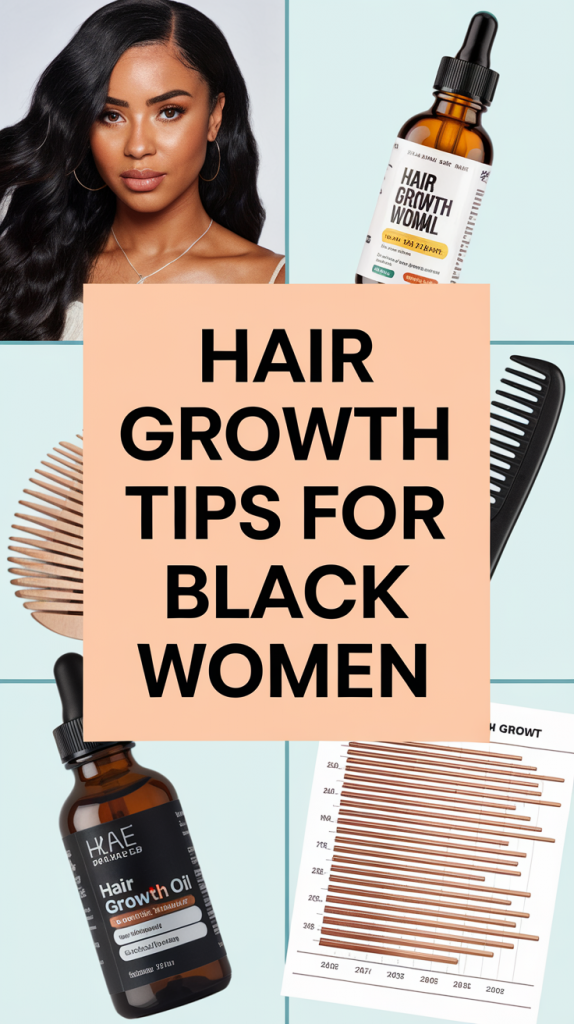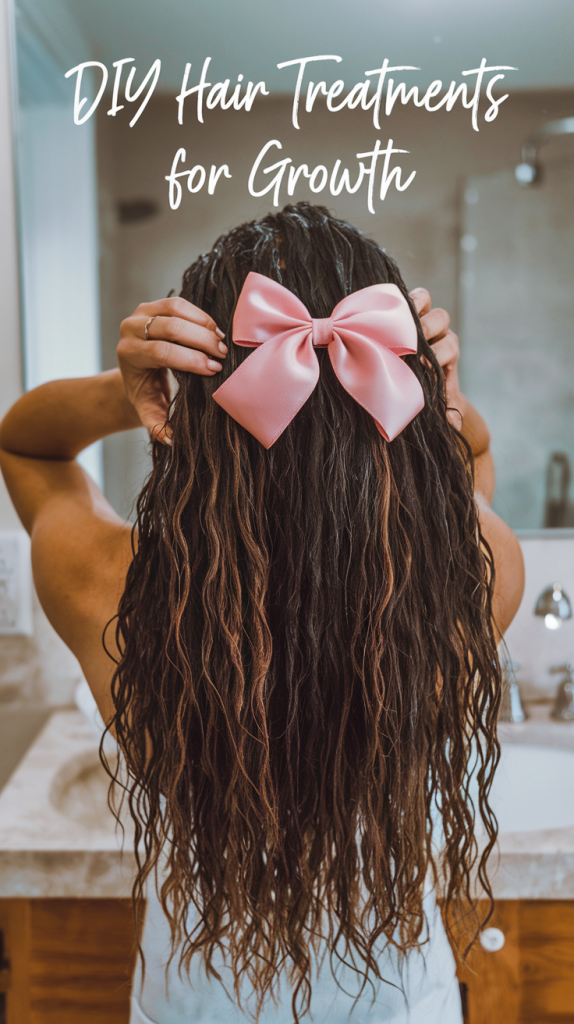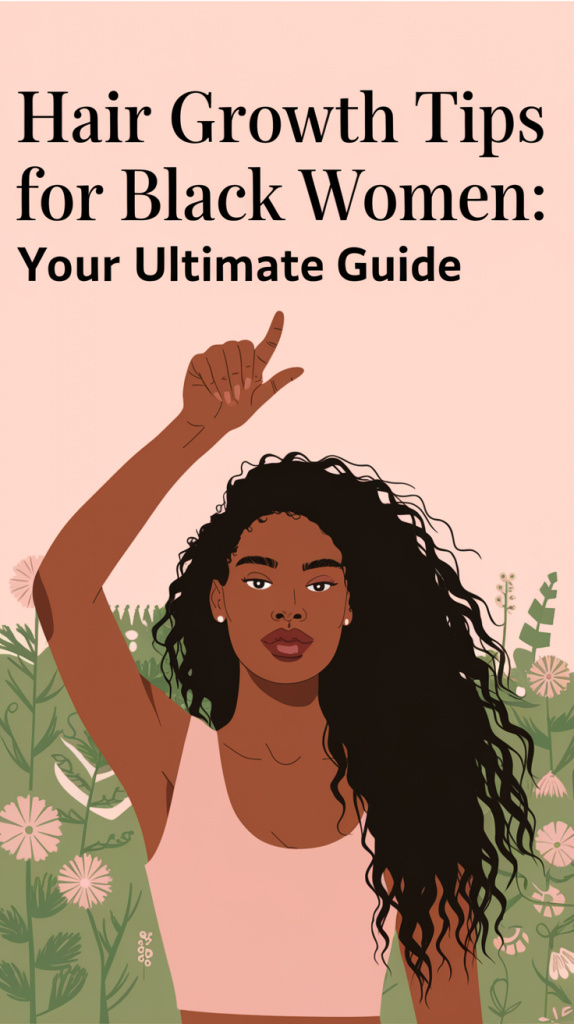Hair Growth Tips for Black Women: Your Ultimate Guide
Achieving and maintaining healthy, long hair as a Black woman is a journey of discovery, self-care, and empowerment. Every coil, curl, and strand has unique needs, but with the right strategies and consistency, flourishing hair is within reach. In this guide, I’ll share my personal insights, practical tips, and actionable advice for hair growth.

Understanding Black Hair: Key Traits and Challenges
Black hair is uniquely structured, with incredible versatility in styles and textures. However, this structure also makes it prone to specific challenges like dryness, breakage, and shrinkage. By understanding your hair’s needs, you can take the first step toward growth.
Common Traits of Black Hair
- High porosity: Often struggles to retain moisture.
- Coily or kinky structure: Makes natural oils harder to distribute.
- Fragility: Requires gentle care to prevent breakage.
| Hair Trait | Characteristic | Care Tips |
|---|---|---|
| High Porosity | Absorbs but loses moisture quickly | Use heavier sealants like shea butter. |
| Low Porosity | Resists moisture penetration | Opt for lightweight, water-based products. |
| Coily or Kinky Hair | Tightly curled, prone to tangling | Detangle gently with conditioner. |
Proven Hair Growth Strategies
Regular Moisturization
Moisture is key to preventing breakage and keeping your hair healthy. On my own hair journey, I noticed a remarkable difference when I started prioritizing hydration.
- Use water-based leave-in conditioners daily.
- Seal moisture with oils like castor or jojoba.
- Mist hair with a water and aloe vera mix for mid-day hydration.
Protective Styling
Protective styles safeguard hair from excessive manipulation and environmental damage. I’ve personally found box braids and buns to be game-changers.
| Protective Style | Benefits | Cautions |
|---|---|---|
| Box Braids | Low manipulation, long-lasting | Ensure they’re not too tight. |
| Twists | Easy to install, protects ends | Avoid leaving them in too long. |
| Wigs | Allows versatility, protects natural hair | Moisturize hair underneath regularly. |
Maintaining Scalp Health
A healthy scalp is the foundation for hair growth. Think of it as the soil in which your hair thrives.
- Wash weekly with sulfate-free shampoo to remove buildup.
- Massage your scalp with oils like peppermint or tea tree to improve blood flow.
- Exfoliate gently with a scalp scrub monthly.
Balanced Diet and Lifestyle Tips
What you put into your body is just as important as what you apply to your hair.
- Eat nutrient-rich foods: Incorporate biotin, iron, and vitamin D from sources like eggs, spinach, and salmon.
- Stay hydrated: Drink at least 2 liters of water daily.
- Reduce stress: Practice yoga, meditation, or simply take a break when overwhelmed.
Seasonal Hair Care Adjustments
Different seasons call for different approaches to hair care. I learned this the hard way when I neglected deep conditioning during winter months, and my hair became dry and brittle.
Winter Care
- Deep condition weekly.
- Wear hats with satin linings to prevent friction.
Summer Care
- Use UV-protectant sprays to shield hair from the sun.
- Keep hair hydrated with regular misting.
DIY Hair Treatments for Growth
I love creating my own treatments at home. They’re affordable, effective, and customizable to your needs.

Strengthening Avocado Mask
- 1 ripe avocado
- 1 tbsp olive oil
- 1 tbsp honey
Blend the ingredients and apply for 30 minutes before rinsing.
Scalp-Stimulating Oil Blend
- 2 tbsp castor oil
- 5 drops peppermint oil
- 3 drops tea tree oil
Massage onto the scalp twice weekly.
Addressing Common Hair Care Mistakes
- Avoid over-manipulation: Too much styling can weaken hair strands.
- Don’t skip trims: Remove split ends every 8-12 weeks.
- Stay consistent: Results come with patience and dedication.
FAQs
1. How often should I wash my hair?
Every 1-2 weeks, depending on your lifestyle and scalp needs.
2. What oils are best for Black hair growth?
Jamaican black castor oil, jojoba oil, and argan oil work wonders for moisture and stimulation.
3. Can I grow my edges back?
Yes! Regular use of castor oil and avoiding tight styles will help restore your edges.
4. What’s the best protective style?
Box braids, twists, and buns are excellent options for reducing manipulation.
5. How does diet impact hair growth?
A balanced diet rich in vitamins and minerals promotes strong, healthy hair from within.
6. What’s the role of trimming in hair growth?
Trimming prevents split ends from traveling up the shaft, maintaining hair health and length.
Conclusion
Growing healthy, beautiful hair as a Black woman isn’t just about products or routines—it’s a journey of self-love and learning. By embracing these tips and tailoring them to your unique hair, you’ll create a routine that allows your hair to thrive. Celebrate every inch of progress, and remember, your hair is your crown.

